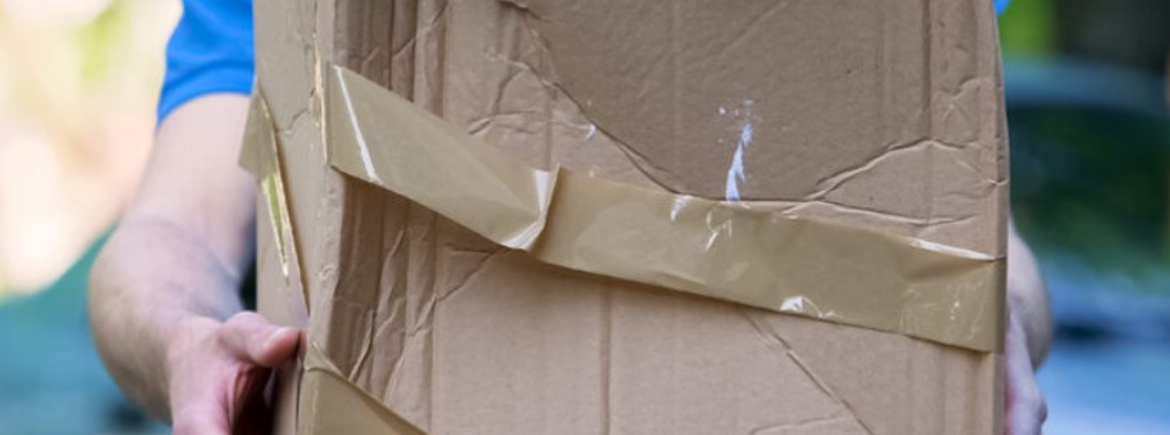Understanding the role of packaging in preventing transit damages

We’ve all been there – receiving a damaged item can be frustrating and disappointing. Especially if the item in question is a gift!
With this in mind, have you ever given much thought to how much damages in transit cost your business? Damages and the associated returns can be a financial burden to your business but also to the environment.
The packaging you use will be critical in preventing shipping damage. In fact, product protection is the most basic function your packaging materials provide.
So, this week, we’ll be looking at understanding the role packaging plays in preventing damages in transit. This blog will cover all about damages in transit, review the true cost of damages and returns to your business and how packaging can be used to prevent shipping damage…
- 1.
- 2.
- 3.
- 4.

All about damages in transit
What does damages in transit mean?
Damages in transit are exactly what they sound like. It’s when a product is broken during shipping from one location to another. But how often does it happen?
What percentage of goods are damaged in transit?
According to our unboxing research, approximately 7% of parcels arrive damaged. The IMRG and nShift also estimate that at least 55% of households have received damaged parcels in the past.
When you consider that there are 1.5 billion parcels delivered each year by Royal Mail alone, it’s not an insignificant amount of parcels that are impacted by shipping damage. So, what’s causing damages in transit?
What causes a package to be damaged in transit?
There are common causes of shipping damage that align across most market sectors. These factors can combine to create the circumstances for product to be damaged in transit:
- Poor or incorrect use of packaging materials – packaging supplies that aren’t durable enough, are too big or small, or aren’t used in the right quantity can all lead to products being damaged in transit. Likewise, if packers aren’t using packing materials properly, this can lead to issues further down the line, such as product movement, which can make goods more prone to damage.
- Mishandling during shipping – it should come as no surprise that if a parcel is mishandled, it could lead to damage. Drops, knocks and shocks can all result in breakages and costly returns.
- Poor load stability – if goods are palletised, poor load stability can lead to shipping damage too. Load stability is critical, as it can help avoid pallets tipping when vehicles take corners. If loads aren’t stable, they can also cause crushing of goods below them.
Backing up these observations, consumers also believe that poor handling of parcels is the number one cause of transit damages, followed by poor quality packaging materials as second.
All these issues can lead to damages occurring because of prolonged vibrations or sudden shocks in transit, mishandling or even the way delivery drivers drive! The damage can result in broken products, surface abrasions, product crushing and pallet tipping.

The true cost of transit damages to your business
Now we know what causes damages, what’s the cost of damages and returns? We mentioned earlier that shipping damage and the resulting returns bear both a financial cost and environmental cost.
How much a damaged parcel costs your operation will depend on your business infrastructure and the type of product you sell…
- What is the value of the item? Can it be refurbished and resold?
- Do you have to write off the stock and is there a cost associated with this?
- Do you have to factor in courier fines or reprocessing time?
- What’s the cost to your reputation and loss of future sales?
- Do you pick up the cost of the reverse shipping process?
This can all add up. Let’s consider a simple example…
If a business ships 100 bowls per week that cost £10 each and 7 are damaged per week, it could cost over £230 per week to return, process and replace those items (when you factor in item replacement, labour and logistics costs). It might not seem a lot, but over a year it’s more than £11,000 on just one product SKU.
Plus, the cost of shipping damage isn’t just financial. There’s the carbon cost to factor in too. If a product is delivered damaged, returned and then a replacement is shipped back out, the emissions associated with logistics can double or even treble. Not great for the environment when carbon dioxide is the principal greenhouse gas contributing to climate change.
With this in mind, it highlights how important your packaging materials are when it comes to preventing damage in transit. You might not be able to entirely control shipping conditions (unless you’re using your own transport) but you can make sure your packaging is optimised to minimise the chance of shipping damage!

The role of packaging in preventing damages in transit
When it comes to protecting your shipments from damage, the packaging materials you use are critical. Here are some common packaging pitfalls that can make shipments prone to damage:
Common packaging pitfalls that can make shipments prone to damage
- Not enough in-pack protection – it can be hard to tread the line between using too much packaging and not enough. Using too much can be wasteful, but use too little and your product could be more prone to damage. How much you need to use will depend on the weight, size and fragility of your product.
- Too much space in a parcel – extra space in a parcel can lead to product movement, which in turn can lead to damaged goods. Excess space means there are air pocks that can be crushed and nothing in the void to absorb shocks, knocks and vibrations. This can also lead to scuffing, as products could rub against one another.
- Poor load containment – when shipping pallets, loads need to be contained properly. If the pallet wrap being used to secure the pallet is too loose, the load could move or tip when in transit. Likewise stacking pallets too high could lead to crushing.
- Packing process inconsistencies – packing quality control can help minimise damage in transit. If packers are using different packaging supplies or varying amounts of packing material, it can lead to inconsistencies and damages. Putting packing guidelines in place or opting for packaging automation where possible can be solid solutions for this.
So, what types of packaging supplies can you use to prevent shipping damage?
Protective packaging products that can minimise damages in transit
The right packaging material for your product can depend on lots of factors like product weight, fragility, size and even the shipping method. To get you started, here are a few protective products that can be used for damage prevention:
- Geami WrapPak – a combination of a die-cut kraft paper with a tissue interleaf paper, this paper expands into a great wrapping solution to protect products in transit. It can be used with either a compact manual dispenser or an automated solution for high demand environments. The paper is 100% recyclable and sustainable and has great shock absorbing properties.
- Airsac® inflatable packaging – this type of packaging features inflatable air chambers that provide 360 cushioning for your product and is perfect for fragile items. The inflated tubes provide superior shock absorption and help virtually eliminate damage in transit. Available in recycled content material.
- AirSpeed Renew air cushioning – created from 30% recycled content, this cushioning material is a great void fill option and can be used for blocking and bracing too. Printed with water-based ink, these bags can also be recycled.
- 12 micron pre-stretch machine film – ideal for secure load containment, when used with a pallet wrapping machine, this film is only 12 micron but has the strength and durability of a 20 micron film.

What will you protect?
What will you protect with the right packaging materials? You’ll not only protect your products but protect your profit margins, your reputation, and the environment.
We can show you how with our Packaging Optimiser tool, which can illustrate the financial and carbon cost of any damage you’re experiencing. Our experts can also provide packing advice, training, and the support you need to minimise damage in transit. Get in touch today to find out more.
